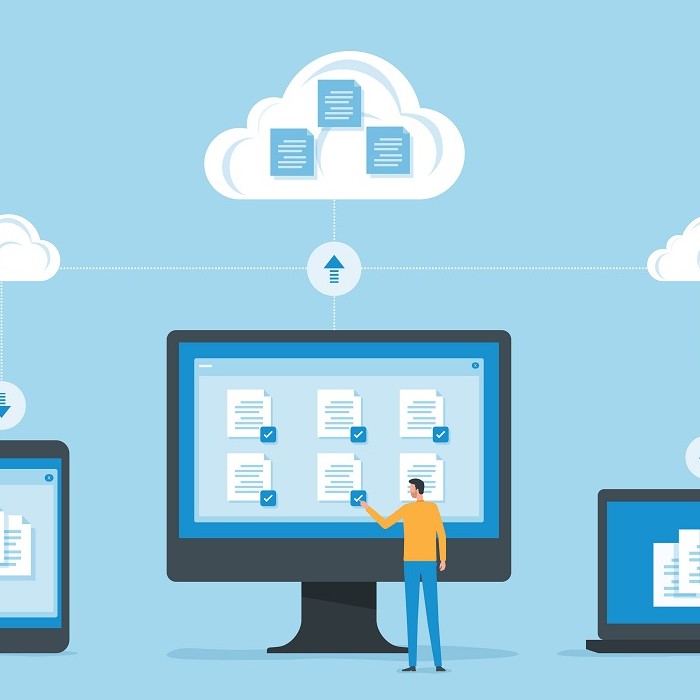IT environments once had a few databases. With the explosion of applications and data, now it’s not uncommon to have a few thousand.
This is the heart of the Postgres day-two challenge: managing massive database fleets and making them seamless for developers building apps. Postgres is shorthand for PostgreSQL, one of the most popular open-source databases.
Anybody who wants a Postgres database can create one without spending a penny. Proprietary databases can get expensive fast, so free open-source databases are a lifeline — especially for software developers. After all, pretty much every app needs a database. Microservices architectures might need hundreds of them.
It’s one thing to create an open-source database. It’s something else to configure, secure, scale and fine-tune one for availability and performance. And that’s just the day-one challenge.
On day two, organizations must dovetail each new database into the rest of their IT ecosystem. This is, to put it mildly, complicating the lives of database administrators (DBAs) and platform teams.
“The core challenge is DBAs are getting overloaded,” database expert Tobias Ternström said in a podcast interview with Computer Weekly. DBAs prefer to work with a manageable volume of the most popular database engines (Oracle, MySQL, Postgres, MongoDB, etc.). “But instead, they end up having to be spread super thin across thousands of databases, different database engines, different versions, different operating systems,” Ternström added.
Ternström is vice president and general manager for databases with Nutanix, the hybrid multicloud software provider. Ternström oversees Nutanix’s database-as-a-service (DBaaS) offering, which aims to help IT teams tackle their day-two challenges. How did we get here and what will it take to improve things? Read on for a quick review of DBaaS and tips for DBAs seeking a better way to manage database ecosystems.
What Brought Us to Postgres Day One
Software developers want their databases ASAP to meet their Agile obligations. They don’t have to wait days for a database anymore. Because they can provision a Postgres database whenever they want for free, they can get in an hour or so instead the of days it might take their IT teams to provision a new one.
And every time they do this, they create a new Postgres day-two challenge for the DBAs and platform teams who support them. In software shops with dozens or hundreds of developers, Postgres day two can be a logistical quagmire.
It’s not the fault of Postgres or the global community of open-source software developers driving its utility and popularity. Postgres and its open-source brethren hold one simple advantage over their proprietary rivals: Nobody has to file a purchase order with their manager to use them. Moreover, developers don’t have to file a support ticket when building mobile apps, cloud-native software and microservices environments with Scrum and DevOps methodologies.
Those processes are central to modern, iterate-and-improve software development techniques that have evolved over the past decade.
“Every software developer will use databases both for testing for evaluation purposes and so on,” Ternström told Computer Weekly.
“And when they do that, they want to just self-service. They want to call an API or click a button.”
Database administration, meanwhile, is still playing catch-up.
“While software development was modernizing, database management remained stuck in the old standard way of doing things, which was very slow, clunky and manual,” said Jeff Kelly, senior product marketing manager with Nutanix, in an interview with The Forecast.
One of Kelly’s responsibilities is promoting Nutanix Database (NDB), a DBaaS offering that lets Nutanix clients manage both their commercial and open source databases from a single-pane-of-glass interface. It’s one of the most advanced DBaaS offerings because it simplifies the management of databases running in hybrid multicloud environments.
Not every organization needs a DBaaS tool with this much horsepower. But most DBA and platfom teams can benefit from DBaaS when day two arrives.
Tips for Better Postgres Day-Two Experiences
Because time is money, Postgres and other open-source DBs are never truly free. They just cost less than proprietary commercial databases.
“There are lots of challenges associated with deploying, configuring and keeping Postgres databases up and running smoothly,” Kelly noted. “It’s a DIY situation: you've got to do it all yourself.”
Of course, companies could just hire a bunch of DBAs and other experts who specialize in Postgres. But in today’s world, there simply aren’t enough Postgres experts to go around and, even if there were, the cost of employing armies of these people would quickly defeat the purpose of economizing with open-source DBs.
This reality paves the way for DBaaS, which automates several difficult, time-consuming jobs: hosting DBs, patching vulnerabilities, upgrading capabilities and providing a standard environment for developers. Developers don’t want to be DBAs — they want to devote as much time as possible to building applications.
What can IT organizations do to get the best results from DBaaS? Kelly advises:
- Start slow – Even with automation, operating a large database fleet with DBaaS can get complicated quickly. “So, you might want to automate provisioning, patching, scaling, cloning and so on, but that's a lot to perhaps do all at once,” Kelly said. “Try focusing first on automating the one or two functions or tasks that cause the most pain for you.” Mastering one kind of automation provides knowledge that can be applied to future automation.
- Impose sensible limits – If software development teams had their way, they’d be able to deploy any database in any configuration. But madness will ensue if developers are given no limits and DBAs will be stretched thin managing innumerable configurations of databases, even with a DBaaS helping with day-to-day management. “You're not going to want to make every database and any configuration available to your developers,” Kelly advised. Instead, development teams should agree to boundaries and avoid “Wild West” scenarios where everybody does their own thing. This is especially crucial for DBs with sensitive data and high compliance requirements.
- Follow implementation best practices – “You’ll get the most value with DBaaS if it’s managing databases that have been deployed properly,” Kelly said. “Sometimes there's a little bit of short-term pain to reconfigure things” to match best practices, he said, but those efforts pay off with easier-to-manage database operations in the long run.
Exploring the Value of a Central DBaaS Hub
Small software development teams may get along fine with one or two popular database engines deployed in the cloud. But as IT environments take on more responsibilities, some DBaaS limitations start to have an impact.
For instance, a cloud service for Postgres might not support other database engines. Or, a public cloud provider may have a DBaaS product but limited functionality in on-prem environments. This complicates DB administration in larger IT environments.
“Most of our customers are adopting a hybrid multi-cloud model where they're using multiple environments to manage to run their applications,” Kelly said. “A lot of them are on-prem, some are in the cloud, and some are in edge locations.”
Nutanix built NDB, its DBaaS offering, to address these needs. It’s compatible with Postgres, MongoDB, Oracle, SQL Server and MySQL, and operates both on-prem and in the cloud.
The value of centralized DBaaS reflects a shift that’s only going to accelerate the day two challenges of DBAs and IT managers. “We’re in the middle of an explosion in databases and applications,” Kelly observed. But there’s no explosion in the availability of highly trained, experienced DBAs. They remain hard to find and costly to hire. DBaaS automation helps close that gap. “No DBA wants to spend all day patching databases,” Kelly concluded. “It’s not fun. They want to think about database architecture and how to improve performance. That should make your DBAs and your platform teams happier because now they're going to focus on higher-value activities that really impact the business.”
Tom Mangan is a contributing writer. He is a veteran B2B technology writer and editor, specializing in cloud computing and digital transformation. Contact him on his website or LinkedIn.
© 2023 Nutanix, Inc. All rights reserved. For additional legal information, please go here.





